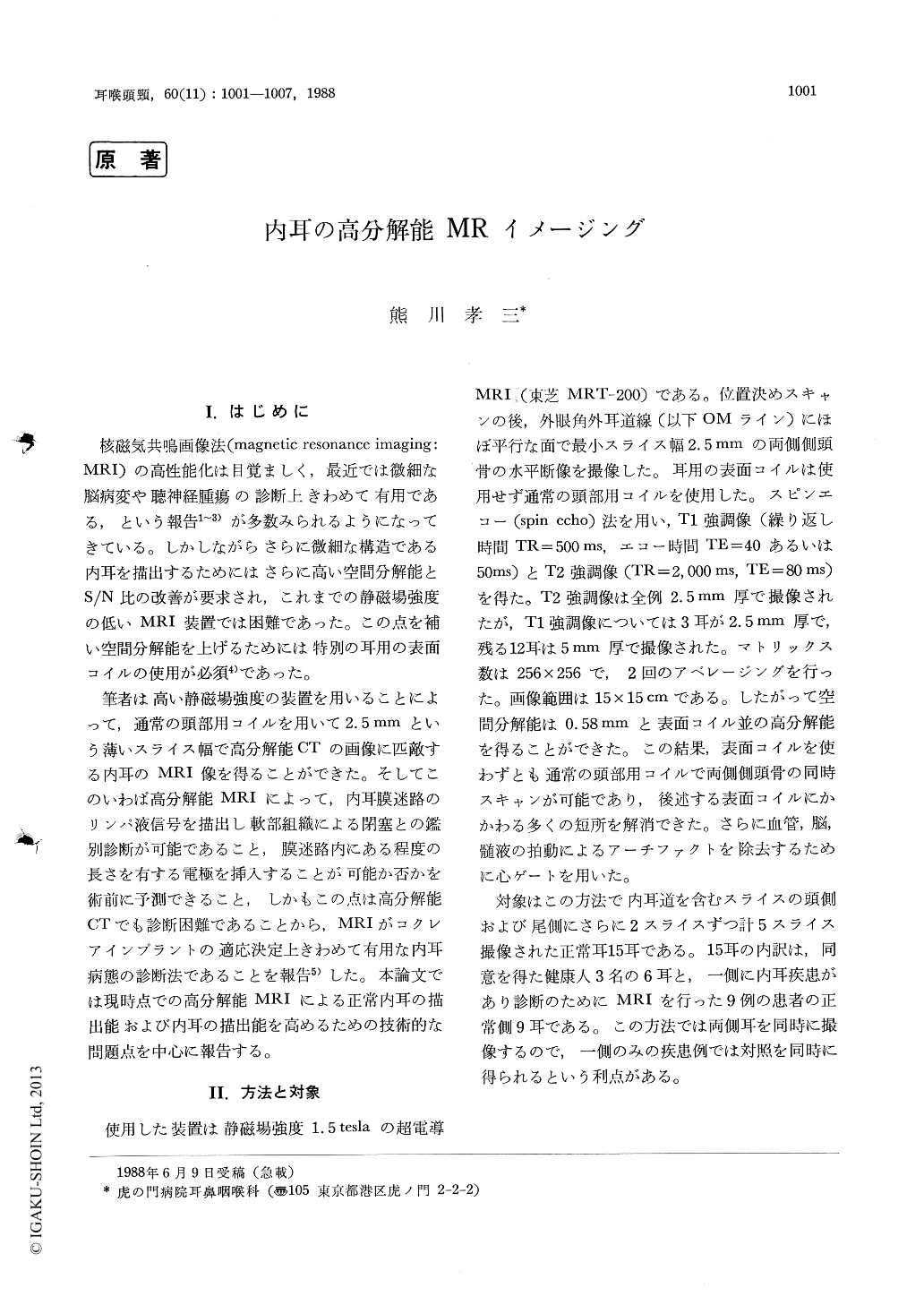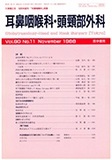Japanese
English
- 有料閲覧
- Abstract 文献概要
- 1ページ目 Look Inside
I.はじめに
核磁気共鳴画像法(magnetic resonance imaging:MRI)の高性能化は目覚ましく,最近では微細な脳病変や聴神経腫瘍の診断上きわめて有用である,という報告1〜3)が多数みられるようになってきている。しかしながらさらに微細な構造である内耳を描出するためにはさらに高い空間分解能とS/N比の改善が要求され,これまでの静磁場強度の低いMRI装置では困難であった。この点を補い空間分解能を上げるためには特別の耳用の表面コイルの使用が必須4)であった。
筆者は高い静磁場強度の装置を用いることによって,通常の頭部用コイルを用いて2.5mmという薄いスライス幅で高分解能CTの画像に匹敵する内耳のMRI像を得ることができた。そしてこのいわば高分解能MRIによって,内耳膜迷路のリンパ液信号を描出し軟部組織による閉塞との鑑別診断が可能であること,膜迷路内にある程度の長さを有する電極を挿入することが可能か否かを術前に予測できること,しかもこの点は高分解能CTでも診断困難であることから,MRIがコクレアインプラントの適応決定上きわめて有用な内耳病態の診断法であることを報告5)した。本論文では現時点での高分解能MRIによる正常内耳の描出能および内耳の描出能を高めるための技術的な問題点を中心に報告する。
Magnetic resonance (MR) appearance of the temporal bone was analyzed with head coils using a 1. 5-tesla magnet whole-body imaging system. MR images were aquired with a spin-echo pulse sequences. The thickness of the sec-tions was 2. 5 mm. T2-weighted images could clear-ly delineate the details of the liquid containing labyrinthine structures and facial nerve with this modality. MR imaging can provide informations unobtainable with CT scan, whether the mem-branous labyrinth is filled with lymphatic fluid or fibrotic tissue, with the proper use of both T1 and T2 sequences. This point is considered to be one of the greatest advantages of MR imaging over high-resolution CT scan in the diagnosis of inner ear disorders.

Copyright © 1988, Igaku-Shoin Ltd. All rights reserved.


